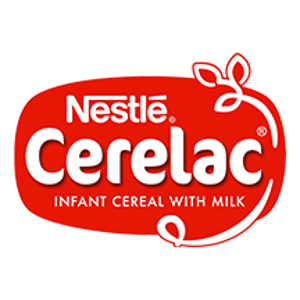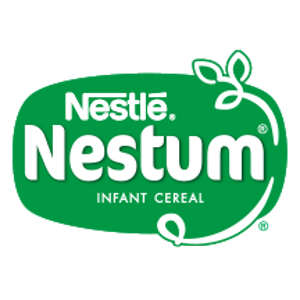
A Parent's Guide to Complementary Feeding: Nurturing Your Baby's Nutrition Journey
Ensure your little one receives the nutrients they need for healthy growth and development.
How to start complementary feeding
As your baby reaches around six months of age, their nutritional needs begin to surpass what breastmilk alone can provide. This crucial stage marks the beginning of complementary feeding, where you introduce solid foods to your little one's diet. Here are some expert tips to help you navigate this exciting journey.
Timing is key
Wait until your baby is around six months old, ensuring they have developed good eye, hand, and mouth coordination. Confirm that your baby can sit up with support and hold their head steady before starting solids.
Variety is essential
Whether you choose pureed foods, finger foods (baby-led weaning), or a combination of both, offering a variety of foods is crucial for providing the necessary nutrients.
Gradual introduction
Start by feeding your baby solid foods once a day, gradually increasing the amount and variety based on their cues. A good starting point is around 5–10 teaspoons (approximately 30g) per meal, working up to two and then three meals a day.
First feed tips
Ensure your baby isn't tired during the first feeding. Morning times, when your baby is hungrier and more alert, are ideal for introducing new foods. Sit your baby upright in a highchair, free from distractions, and offer a little of their usual milk first to ease them into the experience.
Introducing new flavors
Begin with pureed vegetables, as recent evidence suggests that early exposure to veggies can foster healthy food preferences. Introduce one new bitter vegetable each day for a week—options include broccoli, parsnip, beetroot, or zucchini. Remember, it may take up to eight tries for your baby to accept a new flavor, so patience is essential.
Keep track of progress
Maintain a feeding schedule on your fridge to monitor what your baby has tried. Introduce only one new food at a time and combine flavors only after a couple of weeks of successful introduction.
Nutritional balance
Ensure your baby's complementary diet includes essential food groups: fruits, vegetables, grains, dairy, protein sources (meat, fish, legumes), and healthy fats. A varied diet will provide crucial nutrients for growth, including iron, calcium, vitamin C, vitamin A, vitamin D, and omega-3 fatty acids.
Special dietary considerations
If you are raising a vegetarian or vegan baby, incorporate diverse foods like eggs, ground nuts, seeds, soy products (tofu), cereals, and pulses (beans, peas, lentils) to meet their nutritional needs. Consult your healthcare provider for guidance on potential supplements.
Foods to avoid
Be cautious with choking hazards—avoid whole nuts, lychees, and grapes, ensuring they are chopped appropriately. Additionally, avoid pâté, raw shellfish, and unpasteurized cheeses for children under two due to food poisoning risks.
Be a role model
Babies are naturally curious; if they see you enjoying your food, they are more likely to want to try it themselves.
Remember breastmilk's role
At 6-8 months, about two-thirds of your baby's calories will still come from breastmilk or formula, so focus on the quality of the solid foods you offer rather than quantity.
Understanding your 6 to 12-month-old's hunger and fullness cues
Recognizing your baby's hunger and fullness cues is essential for fostering healthy eating habits.
From 6 to 7 months: Knowing when to feed
During this stage, your baby's diet may expand to include more infant cereals and baby food varieties. Look for these hunger signs:
- Cries or fusses when hungry
- Reaches for food or spoonfuls
- Opens mouth and leans in toward food
- Stares at you while eating
Tip: Respect your baby's signals and avoid forcing more food than they desire.
Fullness cues
Your baby will communicate when they are full through various signs:
- Turns head away from the nipple or food
- Pushes the spoon away
- Clenches mouth shut
- Spits out food
- Falls asleep during feeding
From 8 to 12 months: Recognizing hunger and fullness
As your baby grows, their eating habits will evolve. They may exhibit these hunger signs:
- Kicking legs and banging on the high chair
- Watching you prepare food eagerly
- Reaching for food when it’s presented
Tip: Your role is to provide healthy options, while your child decides what and how much to eat.
Fullness signs
Your baby will continue to express when they are full:
- Turns head or leans away from the spoon
- Shuts mouth tightly
- Pushes away the bowl
- Loses interest in food
Baby meal planner: 8 to 12 months
Meal planner for 8 to 10 months
- Consistency: Lumpy, textural foods that promote chewing and soft finger foods.
- Amount: Up to 1 cup at meals and ½ cup for snacks.
- Breastfeeds: 3 per day.
- Timing: Before or between breastfeeds.
- Frequency: 3 meals a day plus 1 snack.
- Types of foods: Introduce legumes, a variety of grains, fruits (including berries and citrus), and stronger-flavored vegetables. Introduce eggs, ground nuts, seeds, and small amounts of cooked milk products.
Meal planner for 10 to 12 months
- Consistency: Harder finger foods and self-feeding.
- Amount: Up to 1 ½ cups at meals and ½ cup for snacks.
- Breastfeeds: 2-3 per day.
- Timing: Before or between breastfeeds.
- Frequency: 3 meals a day and 2 snacks daily.
- Types of foods: Continue offering new foods, encouraging self-feeding.
Note: Always seek individualized advice if there is a family history of allergies, intolerances, or suspected feeding delays.
Embarking on the journey of complementary feeding is an exciting time for both you and your baby. By understanding their nutritional needs, recognizing hunger and fullness cues, and providing a variety of foods, you can set the stage for a lifetime of healthy eating habits.
To further support you on this journey, consider signing up for FamilyNes. Gain access to personalized materials and resources tailored to your family's nutritional needs and parenting journey. Join us today for a healthier tomorrow!

































